Making it More Fun
In Part 2 of our interview, Unravel Two Director Martin Sahlin dives into the development of Unravel Two and making something brand new.
The Making of Unravel Two
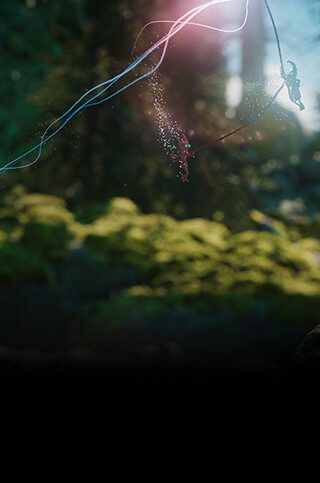
In Part Two of our interview with Unravel™ Two Creative Director Martin Sahlin, he explains how the team at Coldwood Interactive built the game with a specific goal in mind: make it completely different from Unravel. Unravel Two is out now, and a lot went into weaving this whimsical platforming adventure together – a lot of planning, some tough decisions, a few dark warnings for folklore, and at least one embarrassing Yarny-making lesson. Check out Part Two below, then learn about how Unravel Two’s co-op came to be in Part One and the Yarnys’ dark folkloric inspirations in Part Three.
Making a Better Game
What was the biggest thing you learned from the original Unravel that made its way into Unravel Two? That you think most affected development?
Hmm. Test more.
[Laughs] Test more?
Yes, test more. I guess what we tried to do first and foremost – the biggest takeaways from the first game were essentially just test more and plan more. We tried to have a better learning curve without [difficulty] spikes and things like that, and better pacing so that there’s always something happening. There’s always something new for you to learn and we escalate things more in a planned fashion.
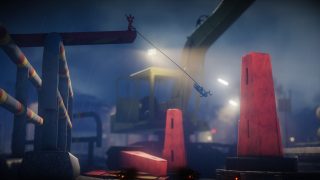
Because I think a lot of Unravel was essentially intuitive design. This was a game that was primarily designed as an emotional experience, and it was important that it turned out that way. But I think this time around we wanted to make something that was a better ‘game’ game. So that’s why we needed to just think more carefully about design and . . . pacing and difficulty ramps and stuff like that, and also make sure there was a much bigger variety of things to do.
We just wanted to make something that was – since the goal was to make a game that felt more playful, we wanted to make something that was more positive and . . . fun than the first one. We just said that “Well, it has to be more fun to play, so we need to be a little more agile. We need to be a little more quick and snappy.” Slightly more powerful. You’re still the fragile yarn thing, but you’re a pretty daring and bold fragile yarn thing that can do pretty cool acrobatics.
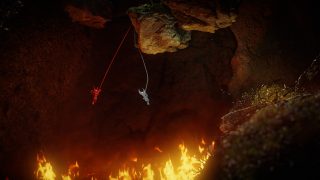
They’re still fragile, but it seems like they can handle that a little bit better.
Yeah, I think it’s sort of – what we tried to do was present you with more challenges and more interesting challenges, but also give you better tools to deal with them. And that also ties into the story as well. In the first game we had the big twist at the end where everything got really, really dark and then super, super bright, and it was a very powerful emotional moment for everyone who made it there – which unfortunately wasn’t everyone, because I think we lost too many players along the way.
So, this time around we said, “We’re not going to do a big twist at the end, we’re going to do a big twist at the start, and then just build you up from there.” Instead of gradually breaking you down and redeeming you at the end . . . let’s just build you up throughout the whole thing.
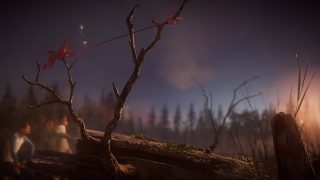
From Unravel to Unravel Two
I’m kind of flashing back to when I played it [Unravel], and I remember being so frustrated with the lamps because I couldn’t figure it out. But I felt my rage kind of fueled what came after, and I was like, “Now I feel really bad for being angry.” So, I don’t know – It worked out for me, but I can see what you’re going for.
Yeah, and I think lot of the stuff in the first game was designed around the fact that we wanted to push players to the edge of what was actually fun, because it wasn’t supposed to be just ‘fun’ all the time, it was supposed to be kind of like a trial. And I think that was right for that game, but I didn’t want to do something that was exactly like that again.
This time we wanted to make something that was like, “Well, this is really about the game and the experience of playing it.” And especially since it’s a co-op game it just makes sense . . . focusing more on just fun and satisfying gameplay. So, in the first game it really worked to be struggling in the snow, dragging that heavy thing behind you because that was what it was supposed to feel like. It was supposed to feel like, “I need this to live, but it’s also just a terror to deal with.” And then you get the point where you’re eventually forced to let it go because otherwise it would just drown you.
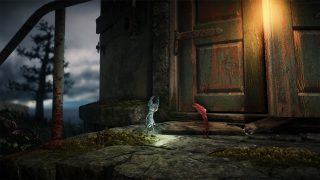
And I think the symbolism was cool. About letting things go. But that also ties into this game, how we start with just ripping your yarn off because we let everything go and we start making something that’s completely new and completely different. It’s sort of like, it’s an Unravel game, but it’s not necessarily a continuation of the other Unravel, which is its own thing.
What would you say did come over from the original Unravel? What was really successful about that that you brought over to Unravel Two?
I think the connection with the character, first and foremost. How we did all these things to make the character seem alive. Because that was the big thing, to see just how much people cared for this little character, and that was just very satisfying to watch and something that we definitely wanted to hold onto.
That’s the main thing, but otherwise just – of course, there’s a lot of things we learned and a lot of things we wanted to keep, but for the most part we tried to make something that felt very new. Because we – I guess we don’t like repeating ourselves!

Customizing Yarnys
And it sounds like [this is] different, that you want to be able to even let people customize their own Yarnys and say, “This is what mine looks like.”
Yeah. But it’s like – what we did was we sat down, and we wrote down some pillars. “This is the stuff that’s non-negotiable. These are the core things about what Unravel games mean, and what they are, and what I think is really important about the character and about the world, about the theme.” We sort of voted on those and agreed on those and said, “These are the pillars and they’re not going to change. We’re not going to compromise on that.”
I think to a very large degree, game development is about compromise, but this was just like – never compromise about these things. And I think that was like a good foundation. Because then…you can let prestige go and skip the hierarchies and let everybody have an equal say. And then…we check it with the pillars and we see “Does it fit? Are we okay with this? Does anyone oppose?” And then we roll with it. So that’s quite nice.
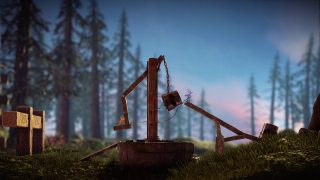
I’m thinking about somebody back in the day [who] made a Yarny that was a scorpion. I have a feeling that would probably not meet your pillars.
[Laughs] It was really nice to see everything that people made and posted online and stuff, and that’s something that absolutely inspired us a little bit to add customization, just that we saw all the different varieties of Yarnys that people made. There’s a big culture house library thing in Umeå, and we had a day where we brought in kids from the local refugee centers. We played video games together and just hung out and made Yarnys and stuff, which was really nice and really lovely.
But before that day we had to have a practice day at work when everybody got to learn how to do it, so they could teach others how to do it. And I think that was a very humbling experience for most people in the office who were just snickering A little – “Oh, this person makes a strange-looking Yarny” – and then they see their own and it’s like, “Oh, this is harder than I thought.”
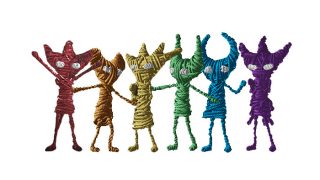
Looking back, it seems like a lot of people are like, “Oh, I made Yarny,” and they make the original red Yarny. So, I think we have an opportunity to tell people [to] be creative with it.
Yeah, do whatever you like. And it’s an interesting thing about a character like that, when there’s some things that – trying different shapes, different silhouettes – totally works and you can still totally tell it’s a Yarny.
But also . . . if you change things too much, you sort of make it into something completely different. For instance, like the size that they are. If they were larger, it would suddenly be a super strange creature. Like it could look exactly the same, but it’s just larger, and then it’s like “Whoa, weird.”
- Ashley Reed (Follow Ashley on Twitter @ashsmashreed)
Swing into an adorable adventure – Unravel Two is available now!
Sign up today to receive the latest Unravel news, updates, behind-the-scenes content, exclusive offers, and more (including other EA news, products, events, and promotions) by email.
Want to know more about Unravel Two? Check us out on Facebook, Twitter, and Instagram!

